Interview of John Durant at Ancestral Health Symposium
 Thursday, January 5, 2012 at 08:16PM
Thursday, January 5, 2012 at 08:16PM Great interview of John Durant at the 2011 Ancestral Health Symposium. John blogs at hunter-gatherer.com
 John Durant in
John Durant in  Nutrition
Nutrition  Thursday, January 5, 2012 at 08:16PM
Thursday, January 5, 2012 at 08:16PM Great interview of John Durant at the 2011 Ancestral Health Symposium. John blogs at hunter-gatherer.com
 John Durant in
John Durant in  Nutrition
Nutrition  Tuesday, January 3, 2012 at 09:04PM
Tuesday, January 3, 2012 at 09:04PM 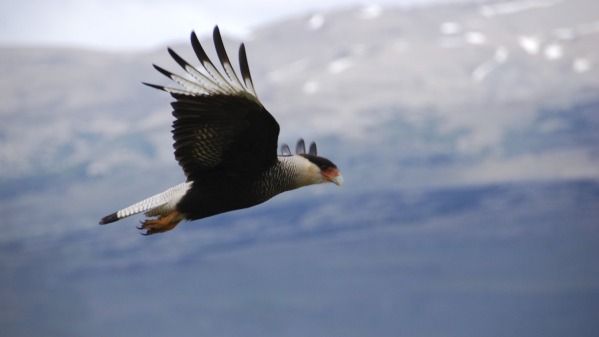 Southern crested Caracara in flight
Southern crested Caracara in flight
The consensus of scientists is that the current rate of species extinctions is on average somewhere between 100 and 1,000 times greatet than prehuman levels, and that we are moving toward an extinction rate that is on average 10,000 times greater.
Stuart L. Pimm, Maria S. Alves, Eric Chivian, and Aaron Bernstein
Sustaininig Life: How Human Health Depends on Biodiversity
Fortunately, we have parks and preserves. Included are images of the biodiversity in Torres del Paine National Park, Chile.
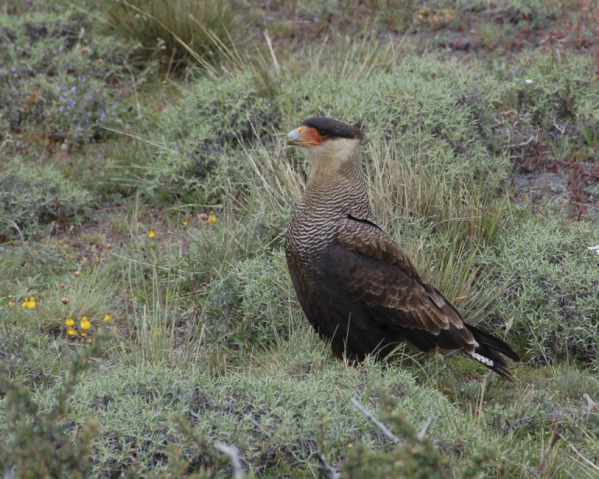
The Southern crested Caracara (caracara plancus), also pictured at top, makes a loud call that sounds like "kara-kara". Is a scavenger but also preys on small mammals and birds. Member of the falcon family.
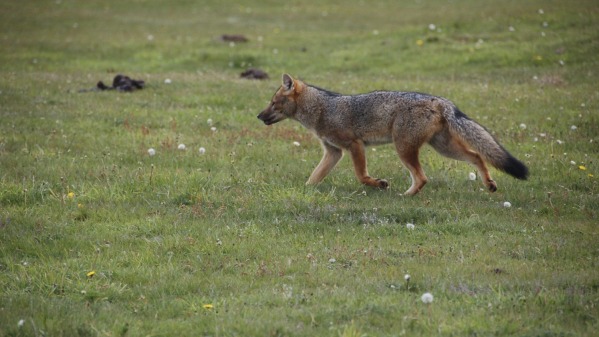
Red fox (Pseudalopex culpaeos).
 Monday, January 2, 2012 at 09:08AM
Monday, January 2, 2012 at 09:08AM  FiveFingers at the leg-press.
FiveFingers at the leg-press.
This holiday my son Ryan and I were treated to Vibram FiveFinger shoes. We went to the local REI and looked through the rack at multiple choices including slips-ons, standard, and booties. Within the standard model, there are more choices to make and the size varies from one style to another. Along with the other customers, we kept the salesman running back to the supply area for more boxes. Eventually I picked the KSO and my son the KomodoSport.
I have worn them around the house after work for the past few days and once to the gym. My initial impressions:
Vibram FiveFingers come with AEGIS Microbe Shield, a permanently bonded antimicrobial barrier. A 2 mm insole and rubber outsole “protect the feet from hot surfaces and rough terrain.” You can learn more about FiveFingers here.
 Vibram FiveFingers in
Vibram FiveFingers in  Fitness
Fitness  Saturday, December 31, 2011 at 08:58AM
Saturday, December 31, 2011 at 08:58AM 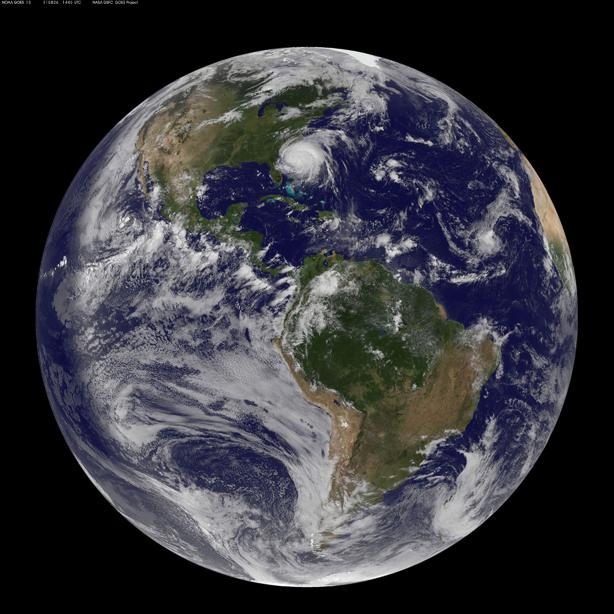
Wishing you a Healthy and Happy New Year!
May we be better stewards of our planetary home.
The format of SUNDAY PALEO has changed. As suggested by John Michael, instead of block quotes, I will share a few thoughts on the links presented. Here goes. I sure my approach will need refinement.
Moving from fad to trend. If you have been in Primal/Paleo for a while, on occasion you may have heard this dietary approach referred to as a fad. (My answer: Since Homo sapiens is about 190,000 years old, if the Paleo diet is a fad, it is the longest-lived fad we know of.) Now, at least according to trendy Shape magazine, instead of a fad, the Paleo diet is the number one trend in the Top 10 Weight-Loss Trends of 2011.
Even some vegetarians are starting to add animal protein to their diet. Among the most cathartic and controversial transformations was revealed by Lierre Keith in The Vegetarian Myth. More recently, a group of “longtime vegetarians” assessed the idea of adding meat to their diet and concluded that what is required is “a new ethics of eating animals: one rooted in moderation, mindfulness, and respect.”
Success Stories on the Primal/Paleo diet are always encouraging and sometimes amazing. Mark Sisson has now grouped some of the success stories he receives from his readers into a section of his website.
And, don’t forget the role of fasting as presented recently by John Michael. (We thank the avid fans at Reddit for making the Paleo Fasting post the most popular on PaleoTerran.)
The brain is picky. Not only does it live in a protected and pressurized environment, it is also very demanding of energy and nutrients. The shortage of one crucial nutrient can cause brain malfunction. For example, a shortage of B12 can make someone appear demented. As Ms. Atkins elderly mother became confused, the first impression was that she was developing dementia. Instead, the primary culprit was a vitamin B12 deficiency. Weekly B12 injections helped Ms. Atkins’ mother recover enough to allow her to live independently.
We owe a lot to mice, at least in regard to studies on health. Now these little creatures are teaching us that the typical Western diet speeds the growth of tumor cells in comparison to a diet higher in protein. This is another study supporting the concepts of the Paleo diet.
In the long run, taking care of our health is not enough if we trash the planet. A powerful way to reduce the impact of the anthropocene is to transition to electric-powered vehicles - as long as the electricity is generated from renewable resources.
However, battery-powered vehicles have limited range and need recharging for long trips. So, where to recharge? Those on the West Coast will have the West Coast Electric Highway. And, if you live in Bellingham Washington, the first fast-charging station that will “provide a 30-minute recharge for all-electric vehicles.”
Solar power is becoming an increasingly effective and important source of renewable energy. India, one of many countries expanding its use, is making progress to a goal thought impossible by many: deliver 20,000 megawatts of solar power by 2020 — “enough electricity to power the equivalent of up to 3.3 million modern American homes during daylight hours.” A success story in the making.
I welcome your feedback in the comments section or to paleoterran@gmail.com
 Monday, December 26, 2011 at 10:28AM
Monday, December 26, 2011 at 10:28AM 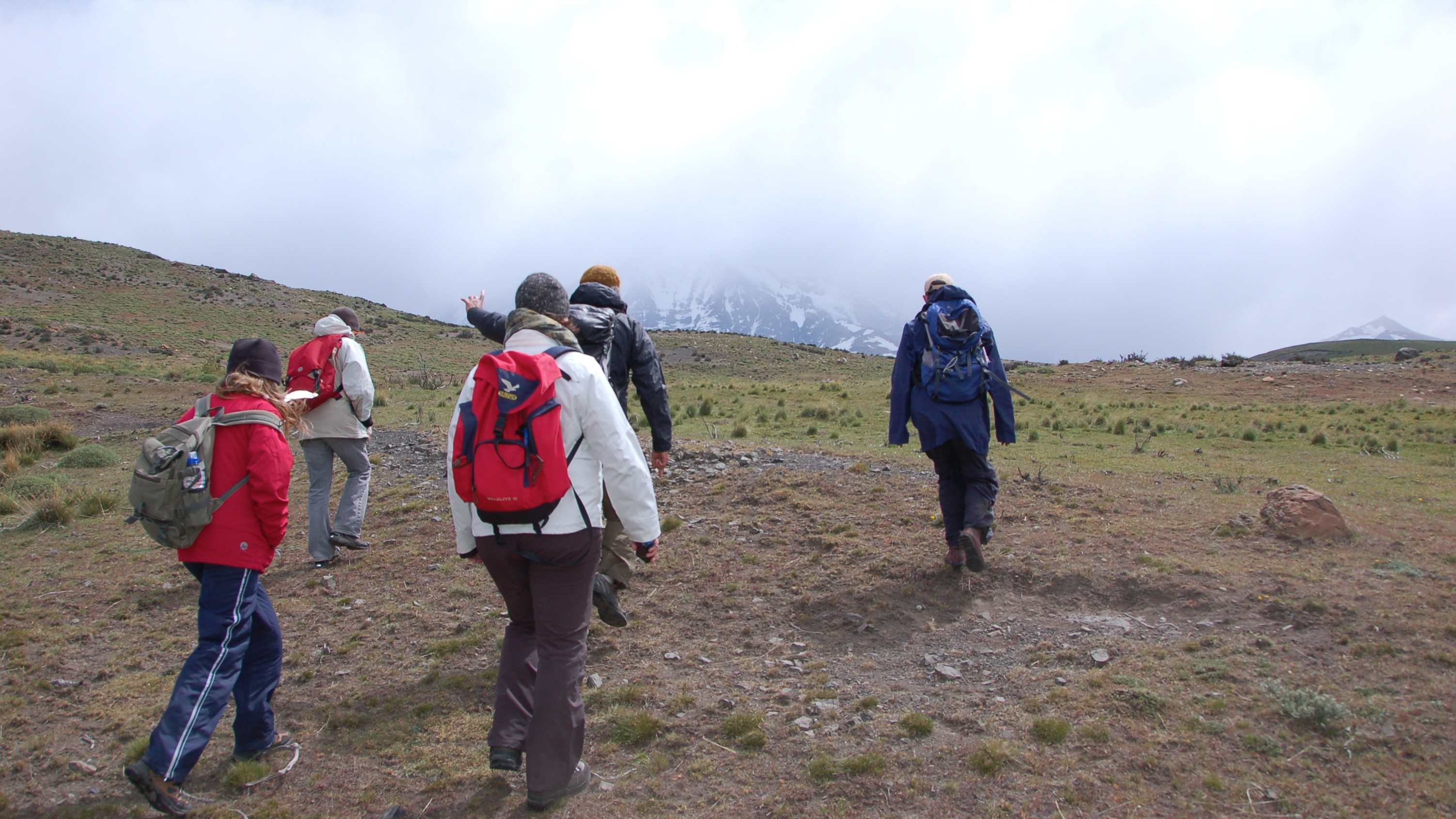
Technically an offshoot of walking, this is my personal favorite way to Move Frequently at a Slow Pace. There’s nothing wrong with walking around the block with my wife at sunset (in fact, there’s everything right with it), but there’s just something about being out in nature, mostly alone and free to do as I please. And really, is there anything more Primal than messing around in the open wilderness? The terrain shifts, there are rocks to lift and toss, tree limbs to climb, and hills to scale. Because your foot lands differently on varied terrain, you train the small muscles in your feet more effectively. If walking around your placid suburban block gets old, strike out for the hills!
Mark Sisson on hiking
Primal Blueprint Fitness
Although we did not lift heavy rocks or climb trees, the hikes in Torres del Paine National Park in Patagonia, Chile were beautiful and invigorating. Here are a few photos.
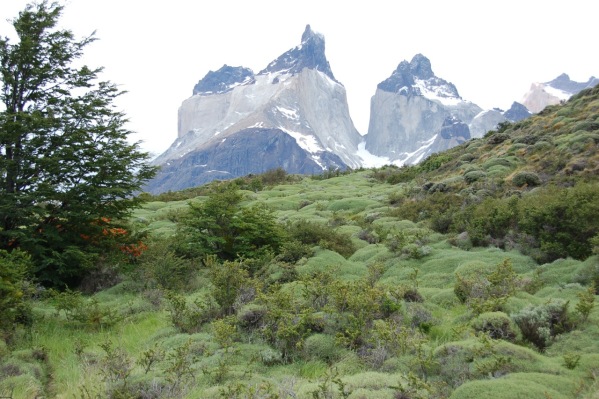
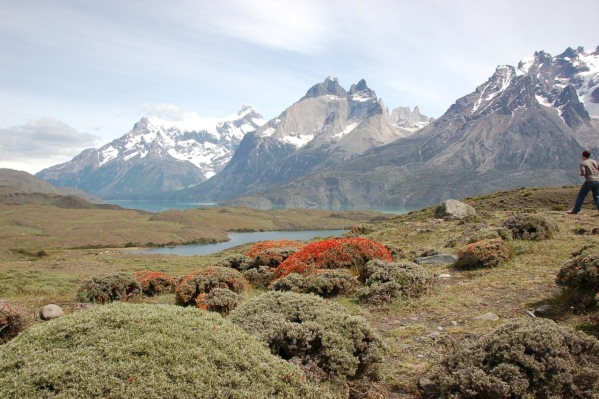
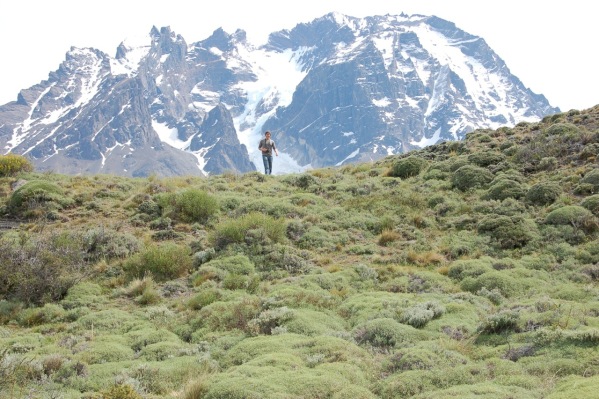
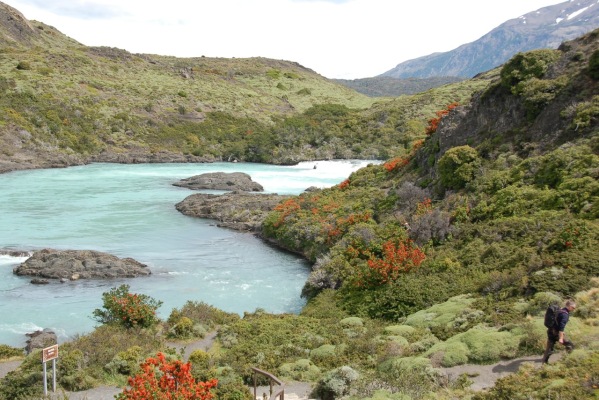
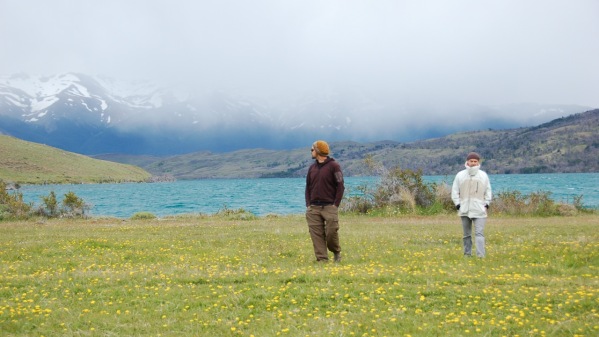
Rafa, one of our guides, and John Michael.
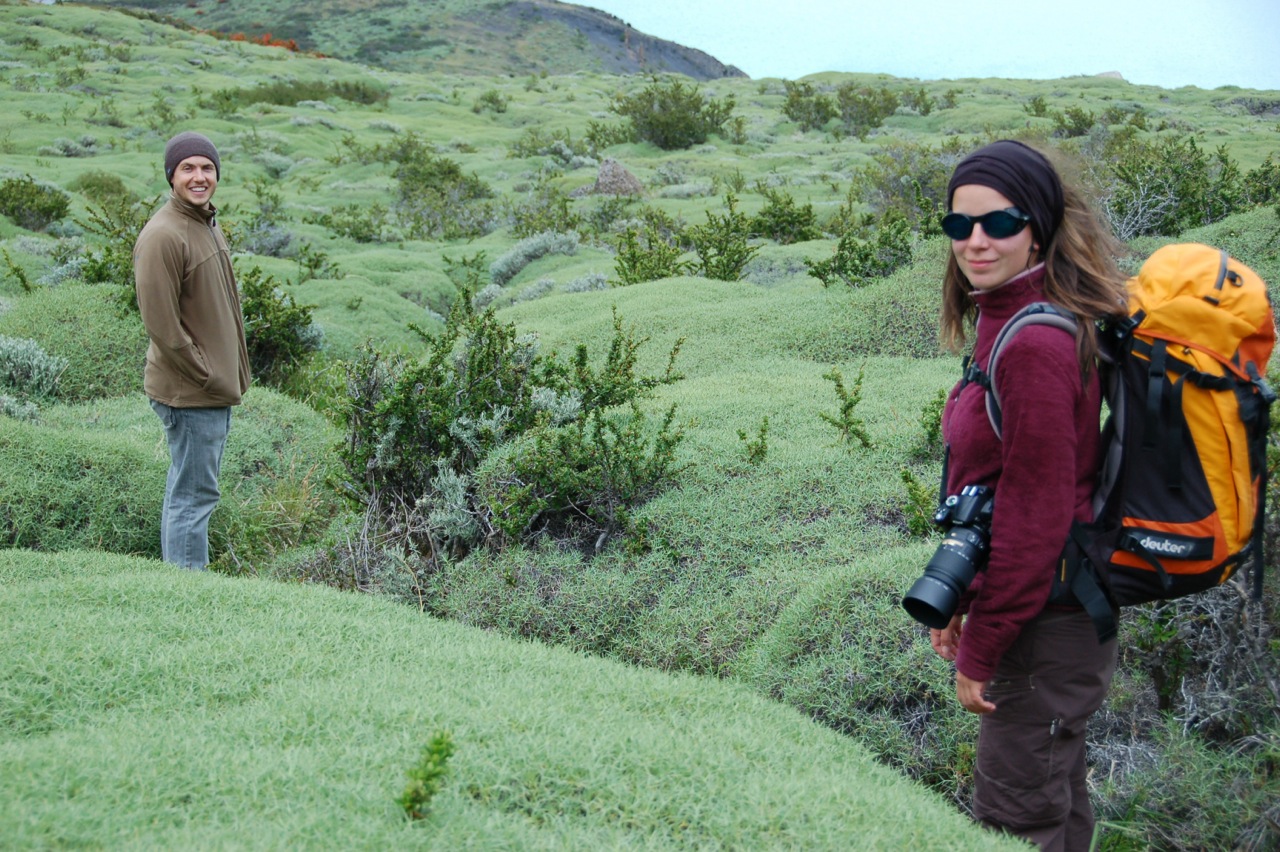
John Michael and guide Nata.
Previous trip entries in chronological order:
 Chile,
Chile,  Patagonia,
Patagonia,  Torres del Paine,
Torres del Paine,  hiking in
hiking in  Travel
Travel  Sunday, December 25, 2011 at 12:09AM
Sunday, December 25, 2011 at 12:09AM 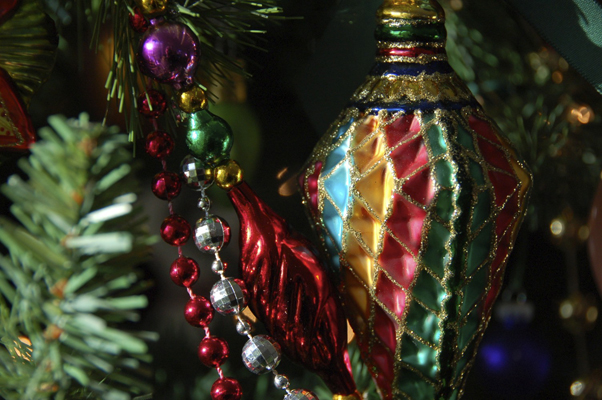
Happy Holidays! Thank you for visiting this past year.
We wish you a Healthy and Happy New Year!
FITNESS
Barefoot running: bad or beneficial?
"I'm constantly scanning the terrain, dodging rougher areas and taking a much more meandering line, which works different sets of muscles. It's almost like dancing. But the moment I put shoes on, most of that sensitivity is gone." - MSNBC
2012 Summer 5 Day Workshops!
“We are happy to announce our 2012 Summer 5 Day workshop schedule. These workshops give participants the unique opportunity to reconnect with their true nature in the beautiful woods of WV. Participants will enjoy camping, learn lots of new movement techniques, become a part of the MovNat "tribe", and most of all have fun.” - MovNat
ENERGY
The 5 States With the Most Installed Wind and Solar Power Saw the Least Increase in Electricity Prices from 2005-2010
“The findings presented here show quite clearly that states with high volumes of wind and solar PV have seen well below average cost increases. When this fact is considered in conjunction with the various health, environmental, energy security, and job creation benefits of renewable forms of generation, it helps to form a compelling argument in their favor.” - Think Progress
Facebook & Greenpeace Join to Ramp Up Renewable Energy
"‘Facebook looks forward to a day when our primary energy sources are renewable, and we are working with Greenpeace and others to help bring that day closer,’ says Marcy Scott Lynn of Facebook's sustainability program. "As an important step, our data center siting policy now states a preference for access to renewable energy.” - Sustainable Business
LIVING
This amazing off-grid hobbit house cost less than $5,000 to build - Grist
MODERN DISEASES
The Truth About Gluten
"‘We're cleaner than we used to be,’ Fasano said, and our general cleanliness may lead to overactive immune systems and a less stable environment for healthy gut bacteria. Additionally, celiac disease may be on the rise because we eat more wheat products now than our ancestors did, and that wheat contains more gluten.” - MyHealthNewsDaily
The Paleo Diet And Gout
“Part of the treatment for gout, which is a form of arthritis, is avoiding of high-purine as well as high-fructose foods. The Paleo diet, which is based on foods your hunter-gatherer ancestors ate thousands of years ago, may be beneficial for gout.” - Livestrong
NUTRITION
Cereal? Cookies? Oh, What’s the Diff?
“So for more than half a century well-intentioned parents have been torn between their desperation to get their kids to eat something, anything, and the knowledge that most packaged breakfast cereals are little better than cookies. … It turns out that from at least the perspective of sugar content, many are worse...” - The New York Times
RECIPES
Standing Rib Roast
This holiday season we enjoyed a standing rib roast, also known as prime rib. This amazing cut of meat is sure to dazzle any dinner guests you have during the holidays. - Primal Palate
Tender Prime Rib Roast with Mushroom and Bacon Sauté
“Prime rib is a cut of meat that’s perfect for special occasion feasts in more ways than one. Served in supple, thick slices that are marbled with fat, it’s a decadent and impressive main course.” - Mark's Daily Apple
Grain-free Christmas Cookie Roundup
To give you something festive to munch on for the next few days, we thought we'd put up a collection of holiday-appropriate cookies for you to make and share with your families! - Primal Palate
SUCCESS STORIES
How the Bears Learned to Stop Worrying and Love the Primal Lifestyle
There are two thoughts I clearly remember having in my lifetime: I am overweight, but I no longer care about how I look and I am fine with being this way for the rest of my life. My husband is likely to die of a heart attack sometime soon and there is nothing I can do about it." - Mark's Daily Apple
TERRA
The Greater Gila: America's First Wilderness
“The Gila has been referred to as the Yellowstone of the Southwest for its size, wildness, and nearly complete suite of natural processes and wildlife populations. Extensive roadless areas, wilderness and old growth forests, unparalleled wildlife—including Mexican spotted owl, Mexican gray wolves, jaguars, and endemic trout and other native fish - make the Gila Bioregion very special with the potential to be the crown jewel of a wild southwest.” - Wild Earth Guardians
 Friday, December 23, 2011 at 07:38PM
Friday, December 23, 2011 at 07:38PM  While waiting for a flight to Denver in the Kansas City International Airport, I walked by several shops selling magazines, newspapers, gifts and snacks. Though there were some Paleo options, like walnuts or almonds, the snacks sold in these shops were predominantly industrial. As I passed a variety of processed treats, a bright and colorful bag of gummies caught my eye, and I began to consider the use of food in America.
While waiting for a flight to Denver in the Kansas City International Airport, I walked by several shops selling magazines, newspapers, gifts and snacks. Though there were some Paleo options, like walnuts or almonds, the snacks sold in these shops were predominantly industrial. As I passed a variety of processed treats, a bright and colorful bag of gummies caught my eye, and I began to consider the use of food in America.
These gummies were not what I’d call real food. Were I to eat them, their sugars would cause my mood to swing, first to euphoric heights, and then crashing toward grim reality; the artificial flavors and food additives would, after leaving a bad taste in my mouth, doubtlessly give me a headache; and, since I hadn’t eaten anything like them in a while, they’d likely cause farts and stomach pains. But if these gummies are going give me so much trouble, I wondered, then why do they even exist?
The Thursday after I arrived we had a family dinner. My brother, a twenty-two year old in his last year at university, had brought over two friends, a young couple who work in the restaurant business. The mood was festive; later, as we washed dishes, my father commented, “It felt like Christmas dinner.”
My mother had roasted a turkey and sweet potatoes, and had prepared a salad of lettuce, blackberries, and dried cranberries. It was all very Paleo, except for the sugar cookies set on a platter in the center of the table. Mom had made them that afternoon, using a cookie cutter to shape them into Christmas trees and stars that she covered with icing and sprinkles.
“Those aren’t Paleo,” my youngest brother, a precocious twelve-year-old, remarked as I took a Christmas tree from the platter.
“Oh, I’m aware of that,” I replied.
“What’s Paleo?” asked one of my brother’s friends.
My dad went from outlining the basics of the diet to its evolutionary rationale and then into historical evidence demonstrating the benefits of Paleo, while I pondered my Christmas cookie.
“The advantage industrial foods have over Paleo foods,” I said as my father finished, “is that industrial foods can be more than just food.” I held up my Christmas tree. “This cookie isn’t just food; it’s a symbol. When I eat it, I’m not just eating; I’m partaking in a ritual.”
My comment caused an uproar. “That’s just the dopamine talking,” my dad said, dismissing my statement as the result of sugar in my blood stream.
“Processed foods have an edge Paleo foods lack,” I continued, undeterred. “They can be more than just sustenance. You eat Paleo because it gives you the nutrients you need. But the reason industrial foods flourish in our culture is because they do more than nourish. When you’re bored, industrial foods entertain – just think of the fun shapes they take, from animal crackers to alphabet soup. When you’re sluggish, industrial foods provide a boost, whether as a caffeinated beverage, or a sugary treat. And when you need comfort, industrial foods have a variety of meals to make you feel better.” “Like grilled cheese and tomato soup,” My mom added, citing her favorite.
But my father was distressed. “Would you put honey in the tank of your car?” he asked, emphasizing that if we do not purposely compromise the fuel in our cars, why should we compromise our own? “I’m not defending industrial foods,” I explained. “Well, it sounds like you are,” my college-age brother replied. “No, I’m trying to describe the uses beyond sustenance they have.” “Oh,” my brother rolled his eyes, “well, your tone suggested otherwise.”
“When you eat Paleo foods, it’s clear that you’re feeding yourself. But when you eat industrial foods, you don’t always feel satisfied. This lack of satisfaction gives room for these foods to serve other functions.”
“Like entertainment, excitement, and comfort,” my brother added, counting the uses on his hand. He smirked as he counted, as if he were indulging me.
“People have come to need these things,” I concluded. “So when you ask them to go Paleo, suddenly they’re eating for sustenance alone. Where will they get their entertainment, excitement, and comfort now?”
“They can go to Paleo gatherings, and ask those there what they do,” my father answered.
“But that’s not a solution,” I replied. “That’s asking someone else for one.” I described my conception of culture as a web of people holding hands, and that when one person changed their habits, that alteration rippled through everyone. “Which leads me to believe the components of culture are interconnected, each taking part in the formation of the other.”
Then I went overboard, and said that if people started eating Paleo, it’d make contemporary life impossible. “Industrial foods make a sedentary existence bearable. The food coma they put you in keeps you just aware enough to perform the tasks you’re assigned. Any more energy, and you wouldn’t bear to be seated all day.” I wanted to express that the activities filling our day influence our dietary choices, and that our dietary choices influence the activities we engage in daily. Behind this was a vision of a culture transformed by Paleo, where people ate well, and then filled their lives with activities that nourished their hearts and minds.
But, as often happens at holiday dinners, the words just didn’t come out right.
John Michael
 Wednesday, December 21, 2011 at 08:45PM
Wednesday, December 21, 2011 at 08:45PM "Effective conservation took many forms this year. From working to restore oyster reefs in the Gulf of Mexico to playing a critical role in the formation of China’s national conservation plan, The Nature Conservancy worked to advance conservation all around the world." - The Nature Conservancy
 Monday, December 19, 2011 at 09:05AM
Monday, December 19, 2011 at 09:05AM As the human species epxanded across the globe, we had to compete with other animals going for the easy food. We went for things like the small hard grass seeds we call cereals, which are indigestible if eaten raw and may even be poisonous, which we have to pulp up and turn into things like bread and dough. And we went into the poisonous giant tubers, like the yam and the taro, which also had to be leeched, ground up and cooked before we could eat them.
Martin Jones, Professor of Archaeological Science, Cambridge University
 Sunday, December 18, 2011 at 12:39AM
Sunday, December 18, 2011 at 12:39AM  Grey Glacier, Patagonia, Chile
Grey Glacier, Patagonia, Chile
ANTHROPOLOGY
77,000-Year-Old Evidence for 'Bedding' and Use of Medicinal Plants Uncovered at South African Rock Shelter
“The oldest evidence for bedding at the site is particularly well-preserved, and consists of a layer of fossilized sedge stems and leaves, overlain by a tissue-paper-thin layer of leaves, identified by botanist Marion Bamford as belonging to Cryptocarya woodii, or River Wild-quince. The leaves of this tree contain chemicals that are insecticidal, and would be suitable for repelling mosquitoes.” – Science Daily
Is the Lion Man a Woman? Solving the Mystery of a 35,000-Year-Old Statue
“Archeologists have discovered previously unknown fragments of a figurine known as the "Lion Man," and are piecing it back together. Could the 35,000-year-old statue actually represent a female shaman? Scientists hope to resolve a decades-long debate.” - Spiegel Online
NUTRITION
What to Eat and What to Avoid for Lifelong Health
“I’ve given you a few basic tools to identify what foods might be preventing fat loss and promoting poor health, so you generally know what not to do, but now you want the details on what you should be doing. Specifically, what you should and should not be eating. Let’s bring it all together and spell it out.” – Mark’s Daily Apple
Why Eating Animals Makes Everything Easier
“The problem is that many of us are broken. Sedentary living, modern food toxins, too much stress, not enough sleep, and a distinct lack of play for play’s sake (more on this later, if you’re confused about why I’d rank “play” with all the other stuff) have fundamentally changed the way we process fuel.” – Mark’s Daily Apple
RECIPES
Scrumptious Salmon Chowder
“…last night I wanted soup to warm us up and I searched around my fridge and pantry for what would work and came up with a delicious salmon chowder using some amazing wild caught salmon filets from our local supplier."- Everyday Paleo
Dark Chocolate Macadamia Bark Sprinkled with Sea Salt
"When your sweet tooth goes looking for the ultimate dessert indulgence this year, look no further. Dark Chocolate Macadamia Bark Sprinkled with Sea Salt tastes fully and completely like “real” dessert. Not only will you enjoy every bite, so will the family and friends that you gift it to (hint, hint, don’t eat it all yourself!)" - Mark's Daily Apple
RECLAIMING HEALTH
It Could Be Old Age, or It Could Be Low B12
“As we age, our ability to absorb B12 from food declines, and often so does our consumption of foods rich in this vitamin. A B12 deficiency can creep up without warning and cause a host of confusing symptoms that are likely to be misdiagnosed or ascribed to aging.” – The New York Times
Confessions of a former Coke addict
“Yes, I've battled a Coke "addiction" more than once. Just when I think I have it beat, it worms its way back into my life. No, this Coke isn't that white, powdery stuff; it comes in a can, and my drug of choice is Cherry Coke Zero.” - Grist
Too much booze blunts your immune system
“Alcohol blunted the monocytes' defences. When the over-the-limit cells were exposed to a virus mimic, they produced only a quarter as much of the virus-fighting signalling molecule called type-1 interferon as teetotal monocytes made.” – New Scientist
Fruits and Vegetables Reduce Risks of Specific Types of Colorectal Cancers, Study Finds
“The effects of fruit and vegetable consumption on colorectal cancer (CRC) appear to differ by site of origin, according to a new study published in the October issue of the Journal of the American Dietetic Association.” – Science Daily
URBAN FARMING
Farming: A New York state of mind
“New York has a lot to offer -- farming is no exception. This week, we visited three very different farmers and heard their take on the city and how growing food plays a role in (and is influenced by) the Big Apple.” - Grist
 Anthroplogy,
Anthroplogy,  Health,
Health,  Nutrition,
Nutrition,  Recipes,
Recipes,  Urban farm in
Urban farm in  Sunday Paleo
Sunday Paleo  Friday, December 16, 2011 at 10:13PM
Friday, December 16, 2011 at 10:13PM 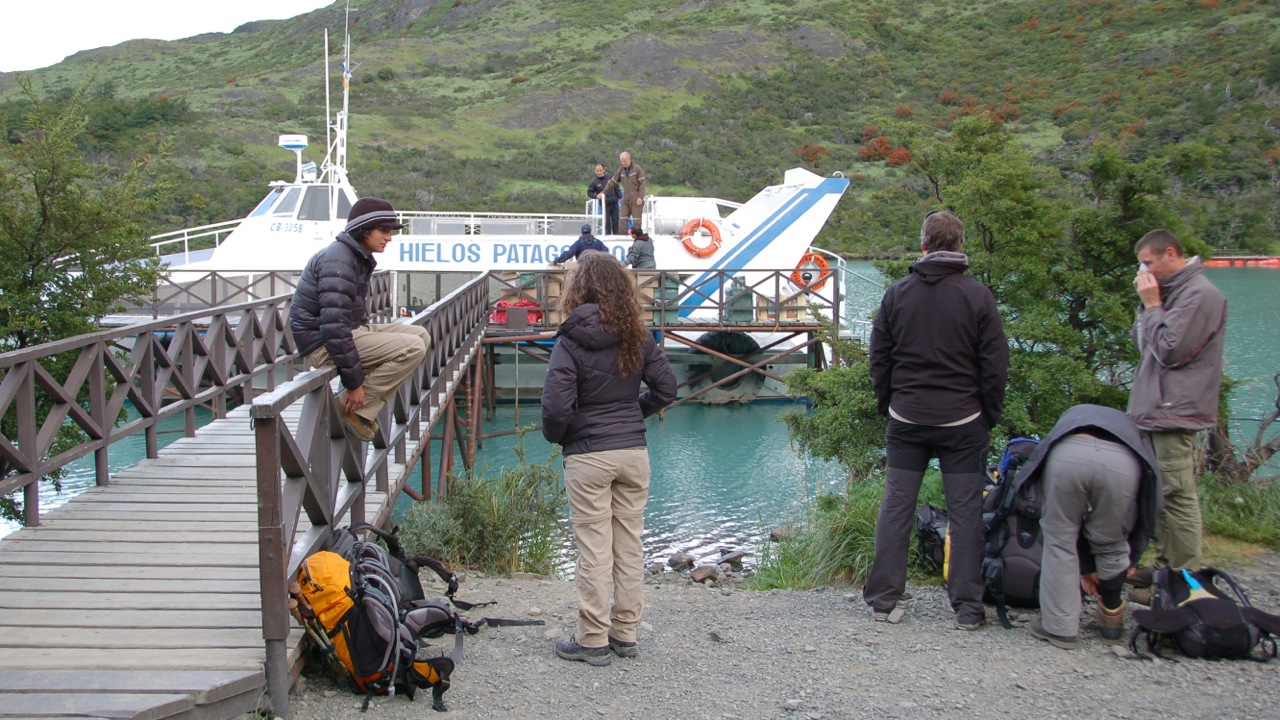
The first hikers in Chile came by boat. Nomadic clans from Siberia crossed Beringia - the landmass that connected Asia to Alaska - 15 to 18 thousand years ago. They likely travelled south along the west coast of North and South America using small boats and living on seafood, waterfowl, and caribou. These Paleo-Americans reached southern Chile 14,600 thousand years ago and steadily moved inland, some inhabiting the Milodon Cave (Cueva del Milodon) in Patagonia 12,000 years ago.
Today, almost 15,000 years following the arrival of the first Paleo Americans, the same rhythm seems to be at work. A boat takes you to another point on the land and exploration continues by walking, hiking, or trekking. Both means of travel provide a deep sense of connection to the natural wonder of southern Chile. The modern world, however, still shows it presence: Torres del Paine National Park is so large, reaching the trailheads usually requires a hydrocarbon burning boat or road vehicle.
Following dinner in the EcoCamp dinning dome, our expert guides reviewed the two hiking options for the coming day. All nine members of our group selected the French Valley hike. My son and I packed a Paleo lunch in a Tupperware-style container and small backpacks containing a camera, outerwear, snacks, and one bottle of water - our guides advised us the natural spring water was drinkable. Obviously, talk to your guide and make your own decision.
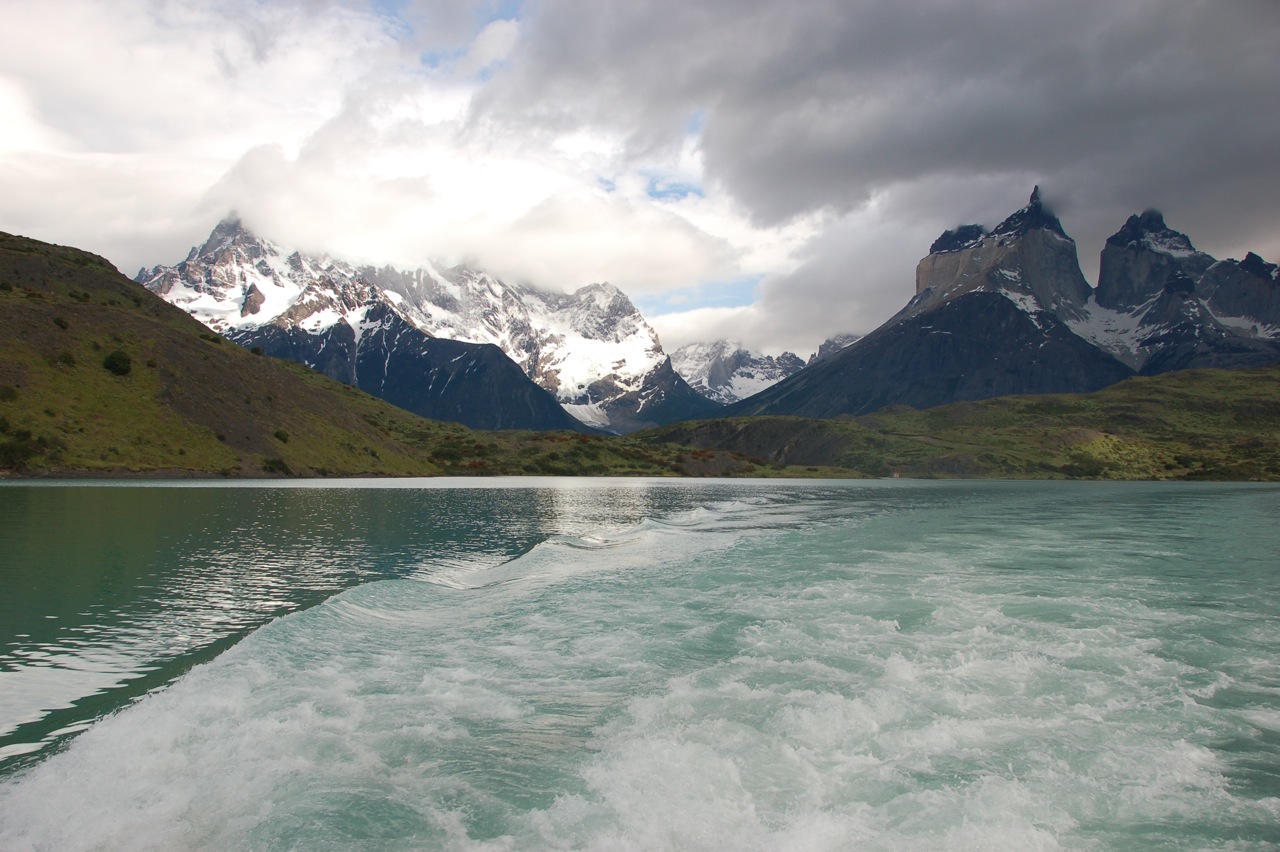
View of Los Cuernos (The Horns) from the boat.
 EcoCamp,
EcoCamp,  French Valley,
French Valley,  Patagonia,
Patagonia,  Torres del Paine,
Torres del Paine,  Walking,
Walking,  hiking in
hiking in  Outdoors
Outdoors  Thursday, December 15, 2011 at 02:19PM
Thursday, December 15, 2011 at 02:19PM 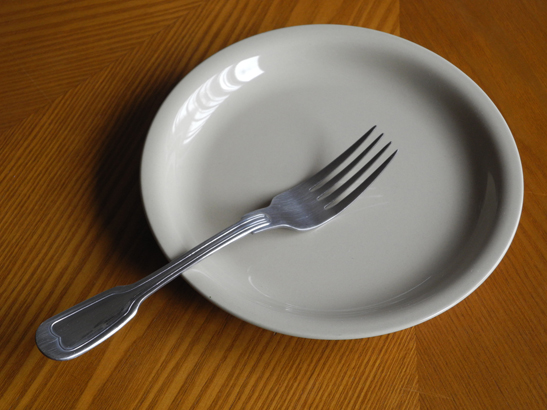 It was when I returned to the US after a year abroad that I became interested in fasting. Whether I was escaping muggers in Bogotá, or taking cover from tear gas during a student protest in Valparaíso, my adventures in South America had given me a hearty appetite: I never knew what would happen next, so I had to keep the calories coming. But back in the States, life became standardized. Surprise and danger ceased to be a feature of my day, and suddenly I felt I was eating too much.
It was when I returned to the US after a year abroad that I became interested in fasting. Whether I was escaping muggers in Bogotá, or taking cover from tear gas during a student protest in Valparaíso, my adventures in South America had given me a hearty appetite: I never knew what would happen next, so I had to keep the calories coming. But back in the States, life became standardized. Surprise and danger ceased to be a feature of my day, and suddenly I felt I was eating too much.
In Buenos Aires, I would consume steamed fish and vegetables twice daily, with fruit and nuts filling the space between. I often mixed things up with beef or poultry, and ate so many mandarin oranges that the Bolivian fruit vendors down the street would start preparing a sack when they saw me coming. Even then I was still hungry, and would sometimes sneak a cookie or two at night. But in Denver my appetite vanished.
There, after eating, I would feel heavy and glutted with energy. Food stuck inside me, and I was always full when it came time to eat again. At first I thought I would switch things up, and decided to consume some grains. This introduced other problems, like stomach pains and flatulence. It was only when I was a few days away from moving back to my hometown in Missouri and became too nervous to eat that I realized I had been consuming too much.
Within a few hours of skipping breakfast, I began to feel lighter, more clear-headed, and energetic. “Only eat what you need,” I thought, my experience reinvigorating this platitude. I had stumbled on a new way of viewing my body: it was an organism, and food was its fuel.
Before I’d just been stuffing food in my mouth, either to address hunger, or to feel comfort. When I broke my fast that evening, I discovered I’d gained the heightened awareness necessary to consider each mouthful I ate. “If I eat this,” I found myself thinking, while contemplating a slice of strawberry, “what effect will it have?”
There’s speculation that our ancestors regularly experienced food shortages – going without sustenance for days at a time – and that our bodies evolved to expect them. What is known with certainty is that the body responds in a distinct way to a lack of food.
During the first day, the liver uses its stores of glycogen, making glucose to feed cells. When glycogen stores are exhausted, usually around the second day, the body starts breaking down fat and muscle. Then, after three days, the liver spares muscle, and begins to produce ketone from fat. This process, called ketosis, continues until fat stores are depleted or food is consumed.
Whether or not fasting is beneficial for the body is still controversial. In an effort to illuminate this topic, the Los Angeles Times interviewed several medical professionals, among them Mark Mattson, PhD.
Researchers aren't sure why the body apparently benefits from a state of mini-starvation. One theory is that the process produces just enough stress in cells to be good. "What our evidence suggests is that nerve cells in animals that are on dietary energy restriction are under mild stress," Mattson says. "It's a mild stress that stimulates the production of proteins that protect the neurons against more severe stress."
According to Mattson’s Nature Medicine profile, he became interested in fasting while researching caloric restriction; his early studies showed that “a low-calorie diet protects the brain, as it does other organs, from the ravages of age-associated disorders such as Alzheimer and Parkinson diseases.”
Mattson's biggest public splash came from a study published last year, showing that regular fasting confers the same health benefits as total caloric restriction. The team showed that mice starved every other day, but allowed to gorge in between, consume only 10% fewer calories than normal, but still have healthier blood glucose levels and recover better from brain injury. This supports the idea that semistarvation boots up stress-response proteins, which then protect cells from aging and disease. Mattson is now hunting for those protective molecules.
Exciting stuff, but not everyone’s jumped on the bandwagon. WebMD suggests there are no proven benefits to fasting, and warns those considering a fast to check with their doctors first.
Apparently, the mental clarity I experienced from not eating can be aimed toward higher pursuits, for, while doctors remain skeptical, religions agree about fasting’s advantages. Whether motivated by a desire for self-restraint, or a willingness to repent, fasting is embraced by the world’s creeds as an effective way to connect with God. There’s even the remarkable story of Prahiad Jani, an 83-year-old practitioner of Hinduism, who claims to have been fasting since World War II, sustained by a spiritual elixir supplied to him by Amba, his patron goddess. “I am strong and healthy,” he recently told reporters, “because God wants me to be.”
 Paleo diet,
Paleo diet,  fasting in
fasting in  Nutrition
Nutrition